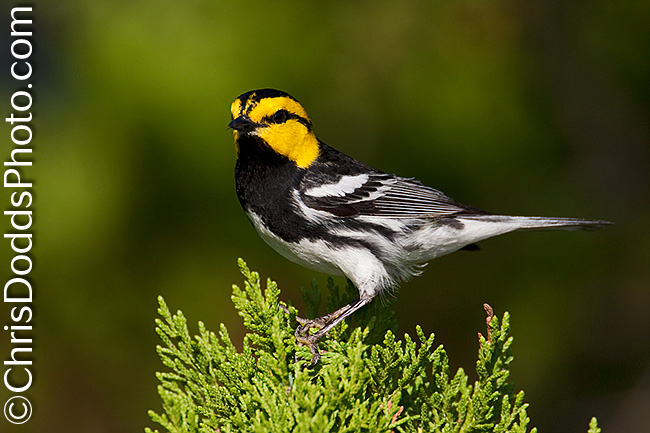



Environment Canada forecast heavy rain all day yesterday, with little chance of bright overcast conditions that would have been conducive to great warbler photography all day long. I decided to venture to the Kingston area of Ontario to give it a try anyway. Worst that could happen is a good birding day without images; sure beats being in the office.
My parents are visiting from Calgary, so I got them up early, loaded into the car and delivered to their friends home in Kingston before most are out of bed (did I mention it was a three hour drive?). From Kingston, I made my way to the Chaffey’s Lock area and spent a few hours in just about perfect photographic conditions. While there weren’t many birds, there certainly were great quality birds. The rain that did fall was light and misty, while it was mostly just dark and overcast. Considered a photographic nemesis bird by many, I had a blast photographing this gorgeous male Cerulean Warbler. I've photographed Cerulean Warblers many times there before, but Queen's University conducts research and most are banded - it was a dream come true to get a nearly perfect male without bands in Ontario. While using the Canon 1DsIII, I strive to keep the ISO under 400; however, there are times when I simply have to use a higher ISO. Properly exposing the image in the camera is the single best way to minimize noise.
The Cerulean Warbler (Dendroica cerulea, Paruline Azurée) gets its name from the vivid blue coloration of the male warbler's back and cheeks that makes this a difficult bird to find in the tree tops, where it lives and nests. Cerulean Warblers are forest-interior birds that require large, relatively undisturbed tracts of mature, semi-open deciduous forest. In Ontario, they are restricted to such habitats in the Carolinian Forest zone and the southern part of the Great Lakes St. Lawrence Forest zone. These birds begin their long migration to wintering grounds in northeastern South America in late summer. A species of special concern both Provincially and Nationally here in Canada, and in the United States, it is considered a species at risk by many. Recent studies suggest its population is only 30% of what it was only 20 short years ago; dropping faster than any other North American Warbler. On the North American breeding grounds, the chief threat to this warbler is habitat loss resulting from forest fragmentation and degradation. On the South American wintering grounds, forested tracts in mountainous regions are preferred, and these areas are considered to be under a high degree of threat from logging. Nest parasitism by the Brown-headed Cowbird (Molothrus ater) may become an increasing problem as cowbird populations increase in degraded forest habitats. The Cerulean Warbler is protected in a Schedule under the federal Migratory Birds Convention Act.
MORE KUDOS:
Point Pelee photography workshop participant, Michael Lyncheski (from Gladstone, NJ) emailed me this testimonial (thanks, Michael):
“I was impressed on how much Chris cared about making sure everyone was learning, engaged, and getting the most out of the trip. I look forward to my next workshop with Chris!”



















